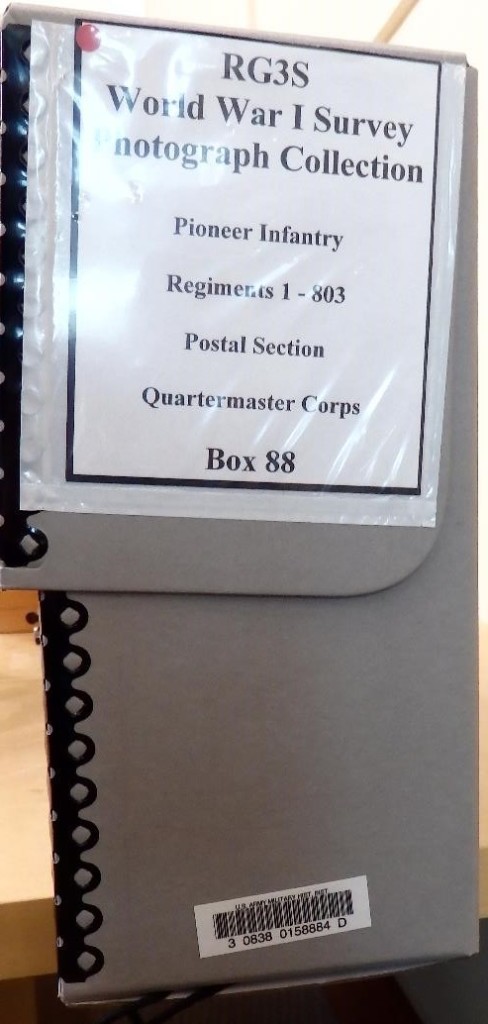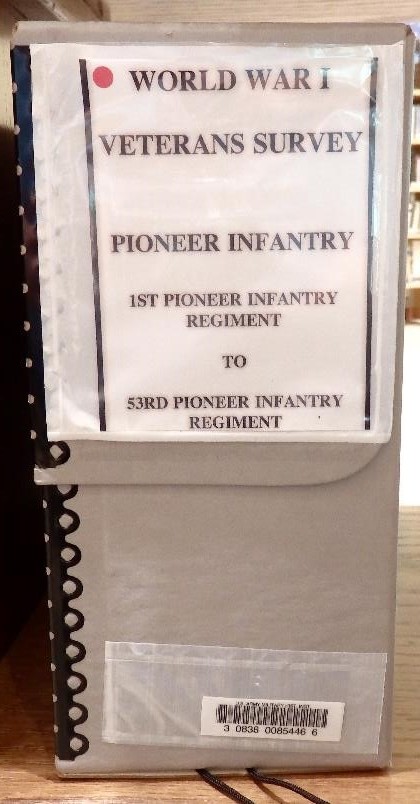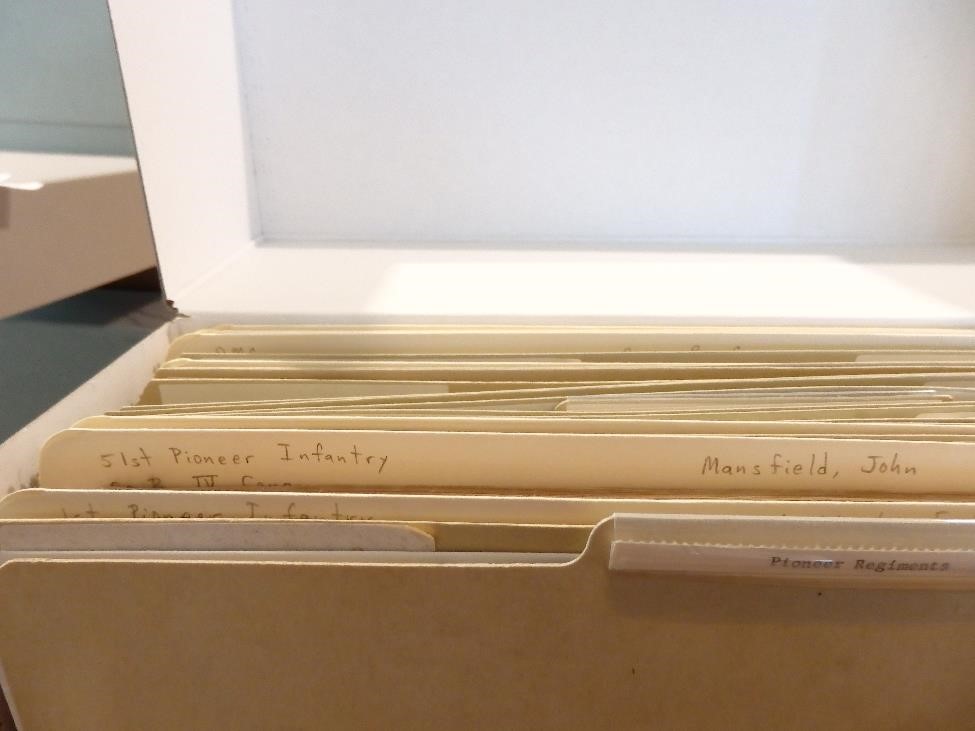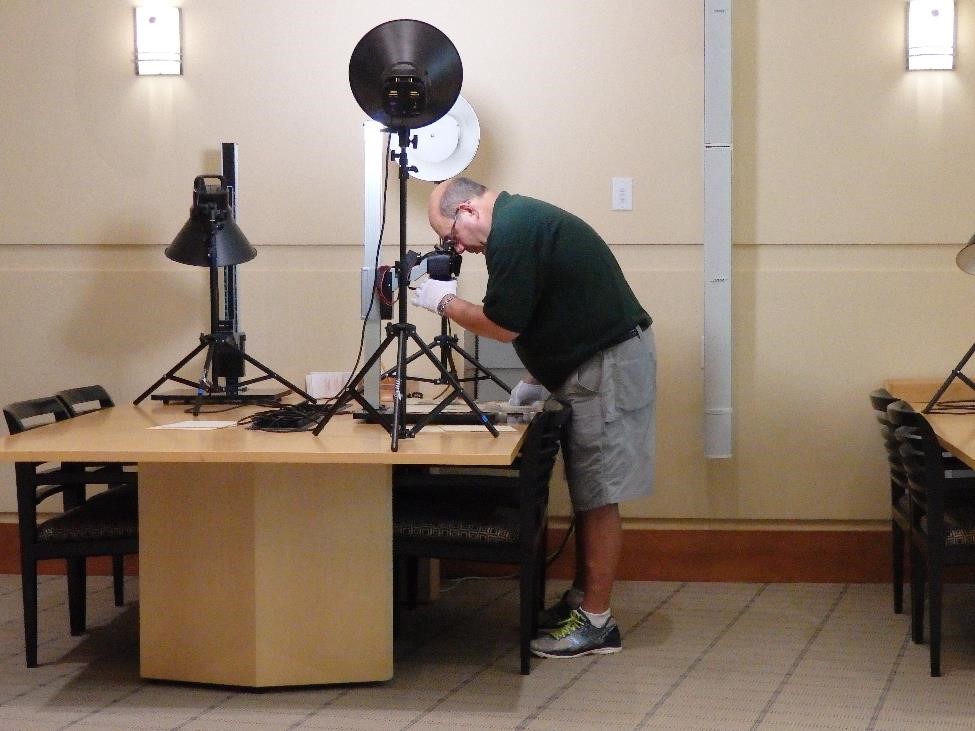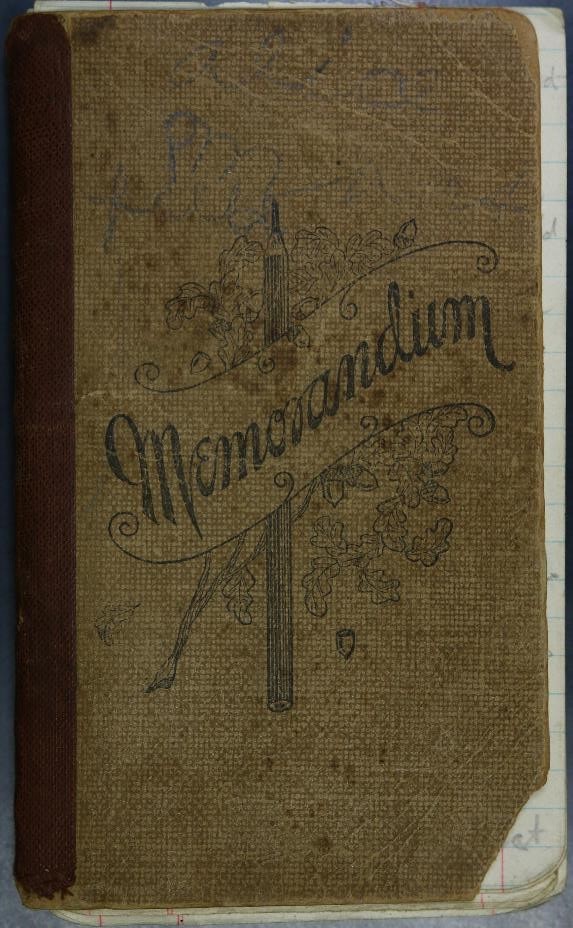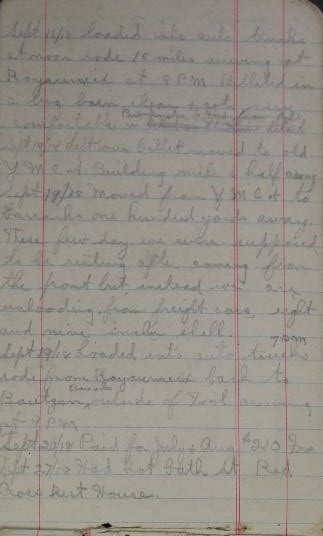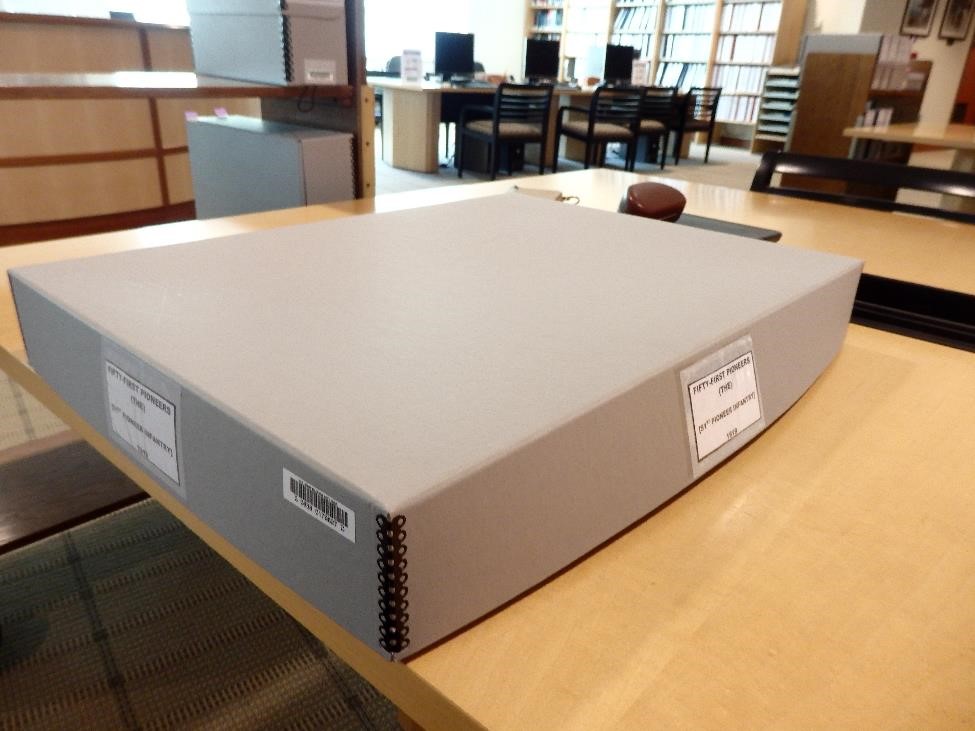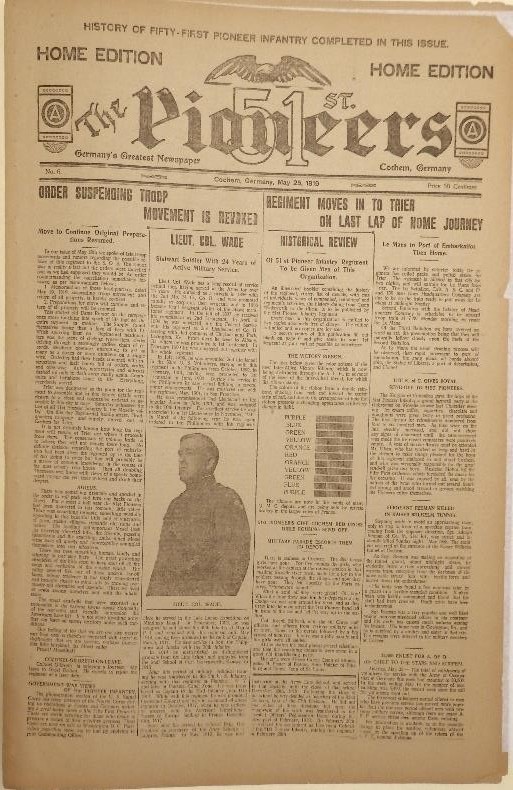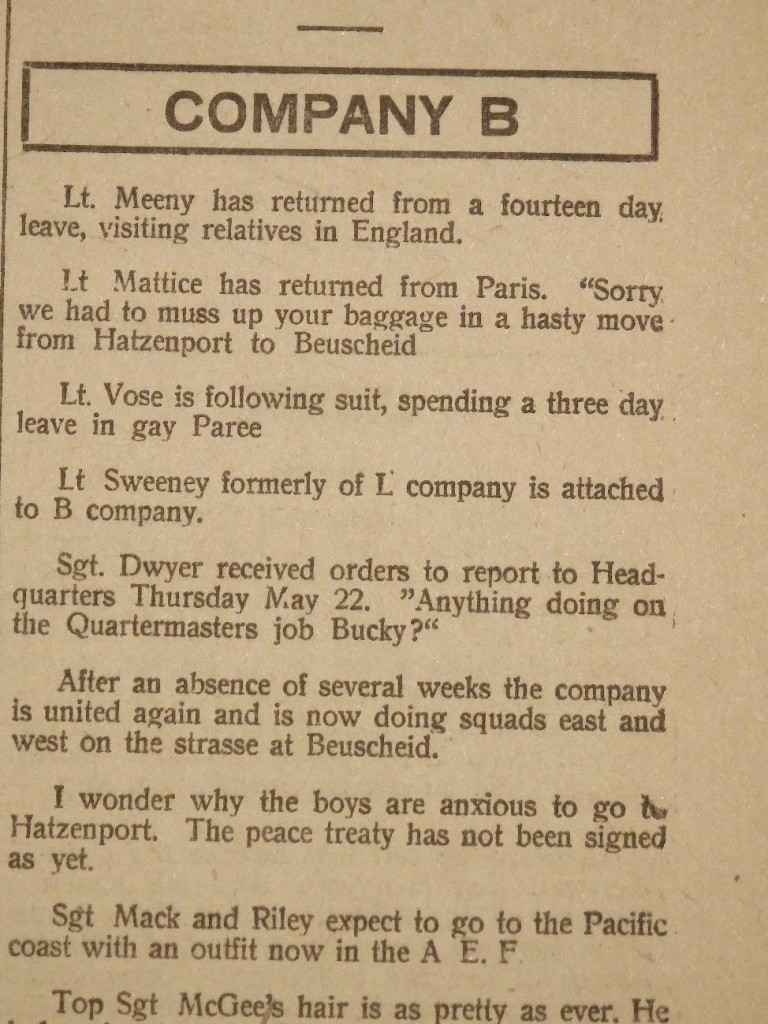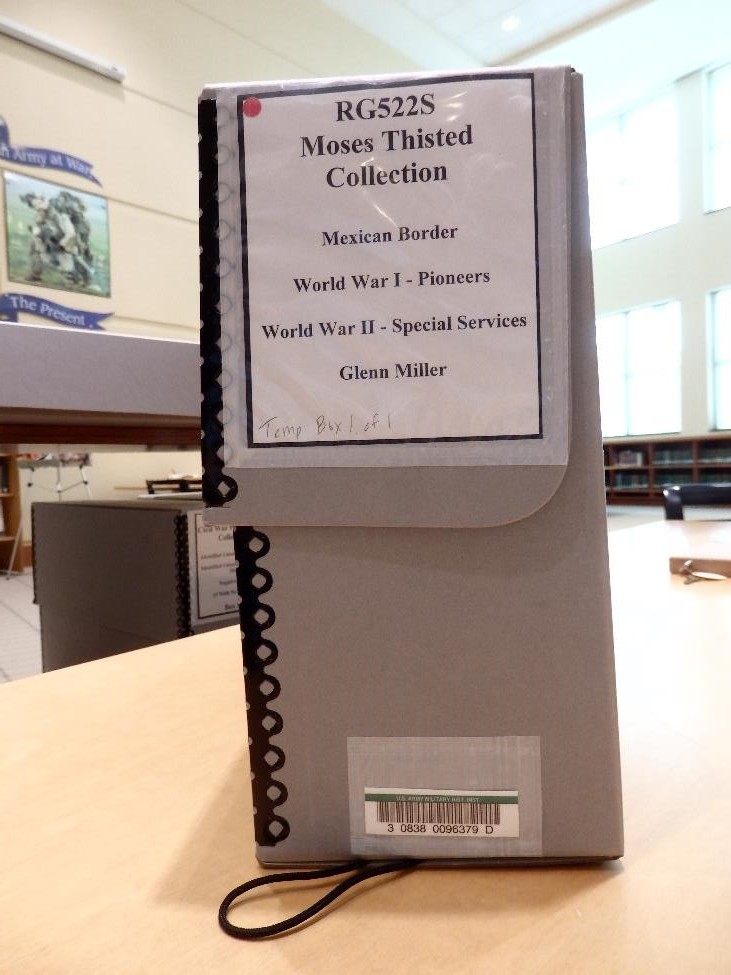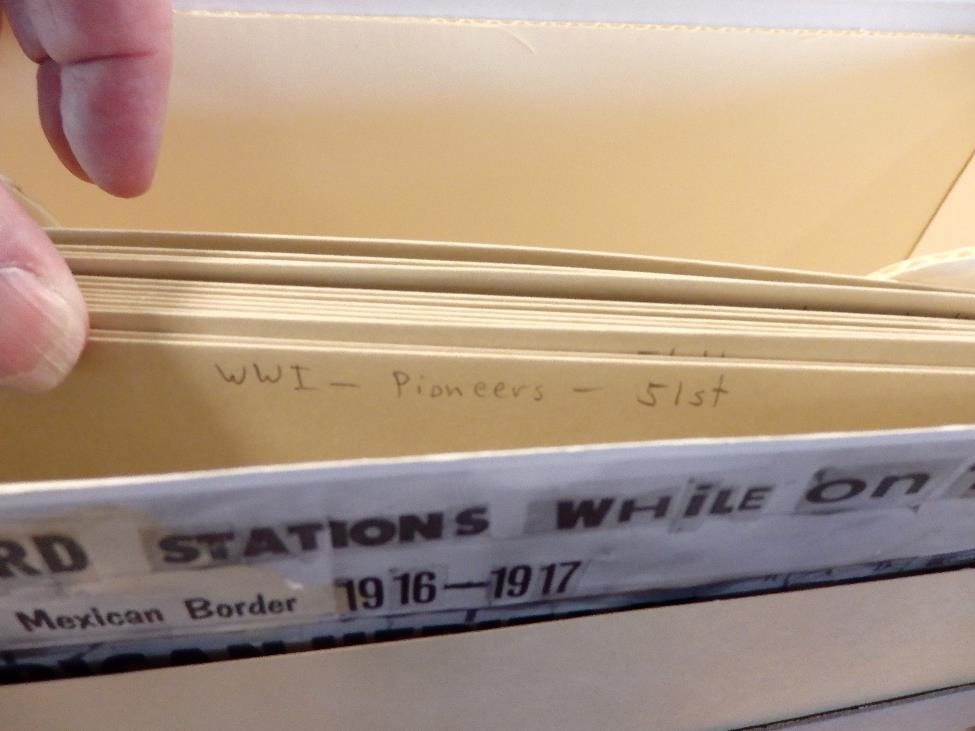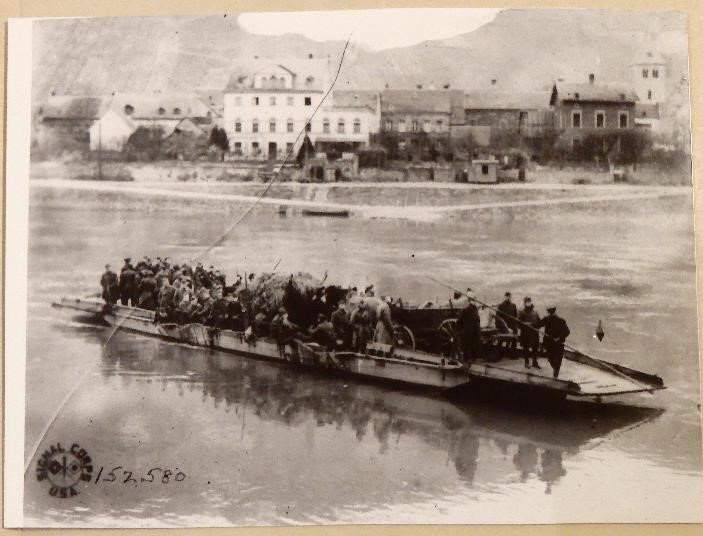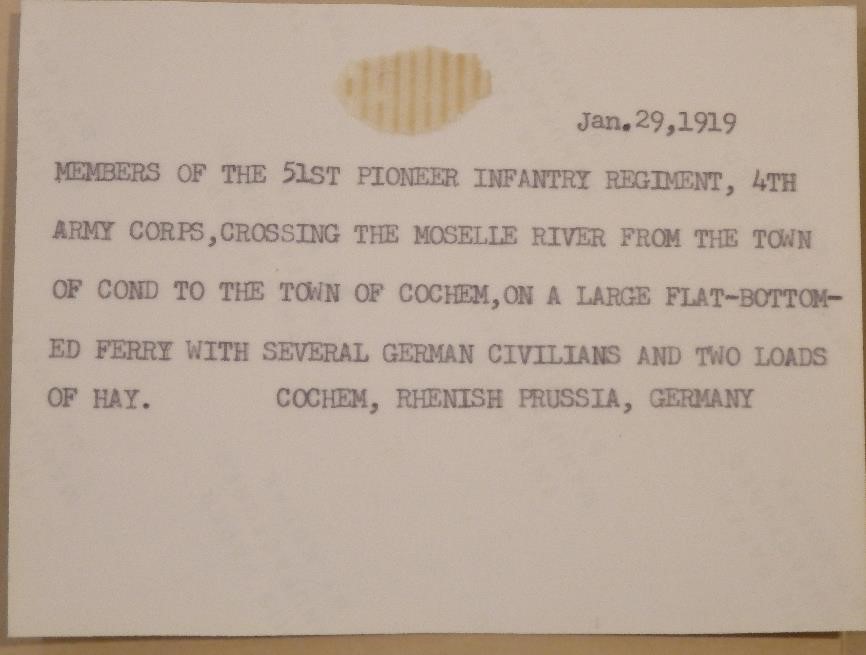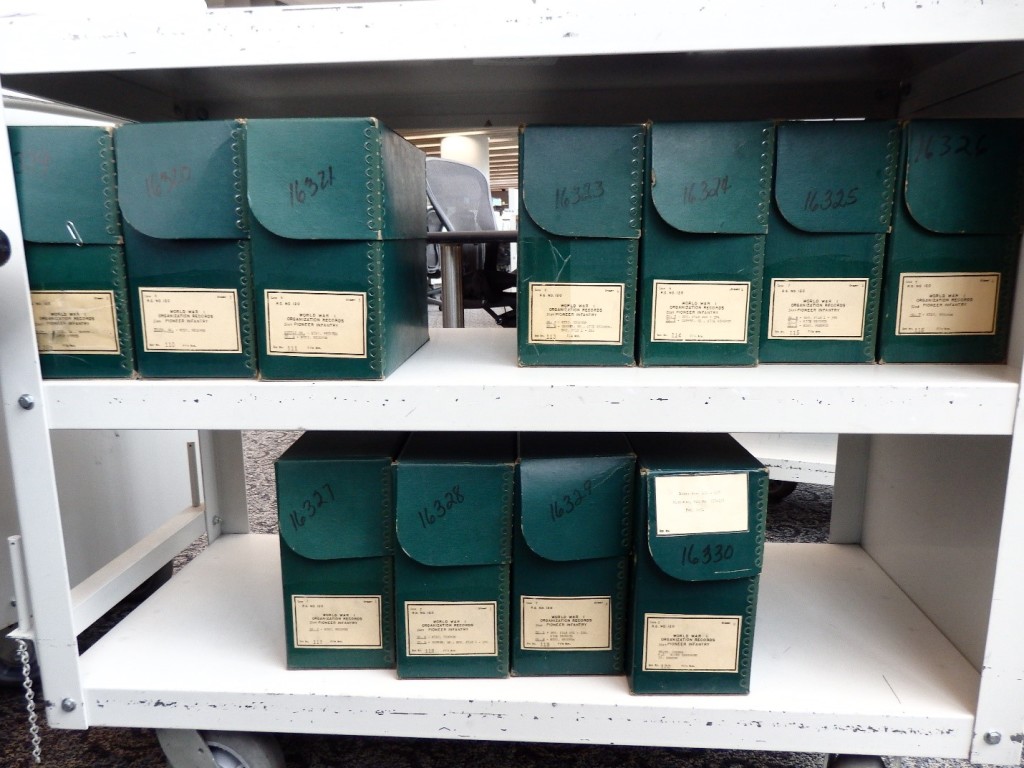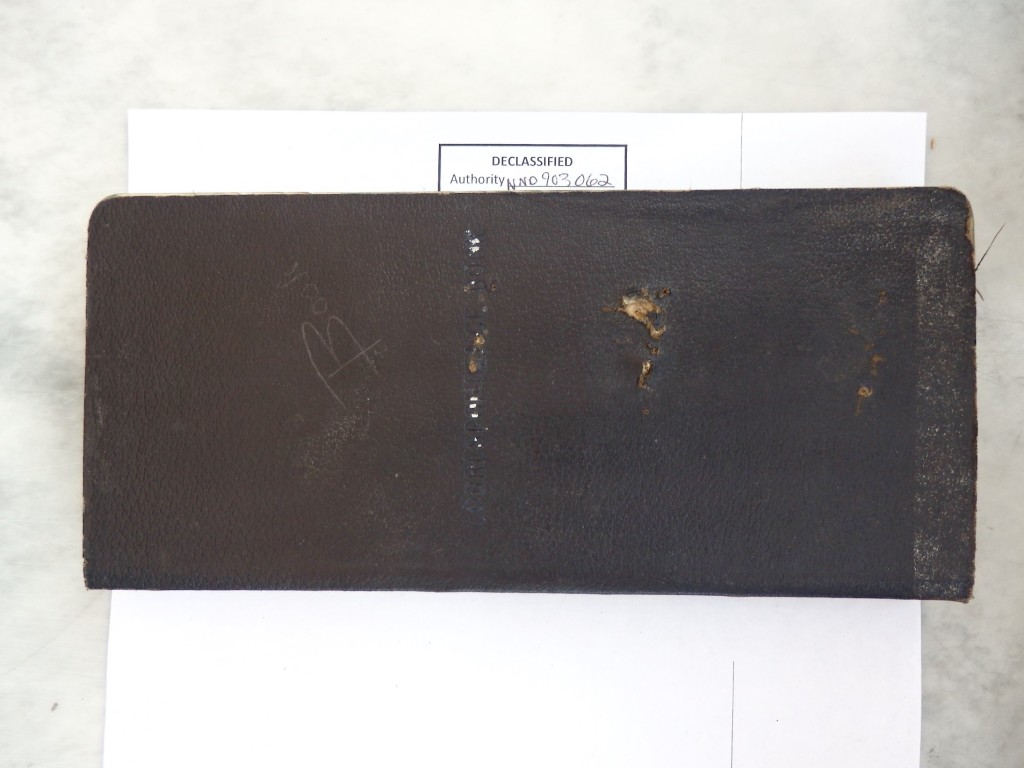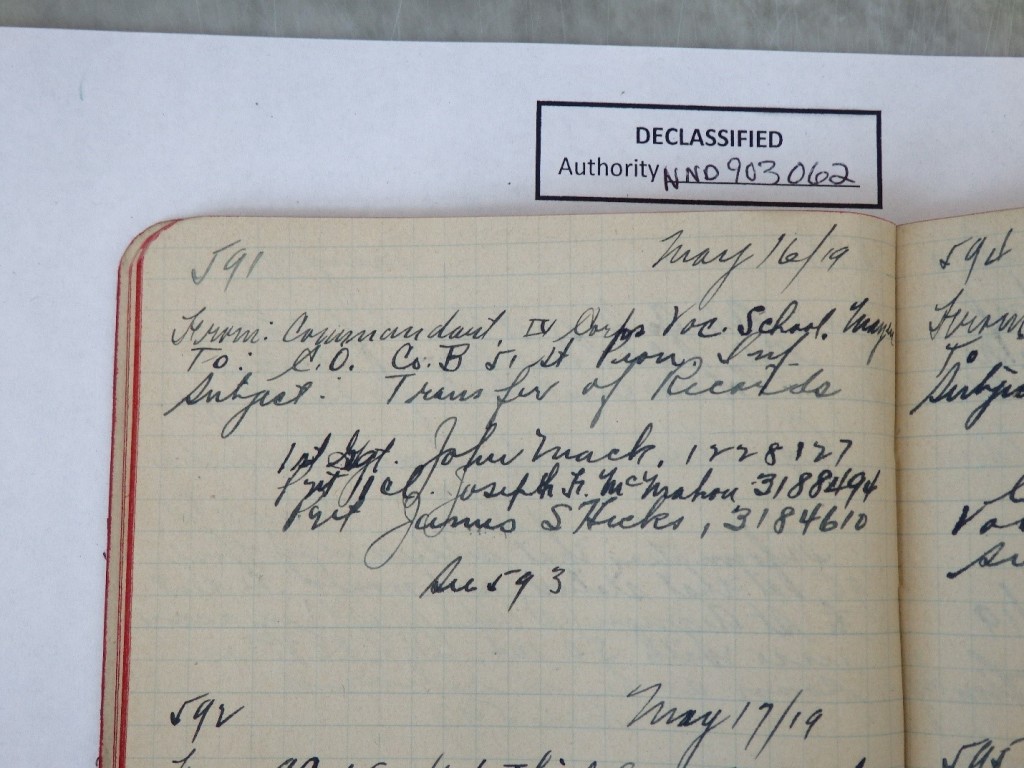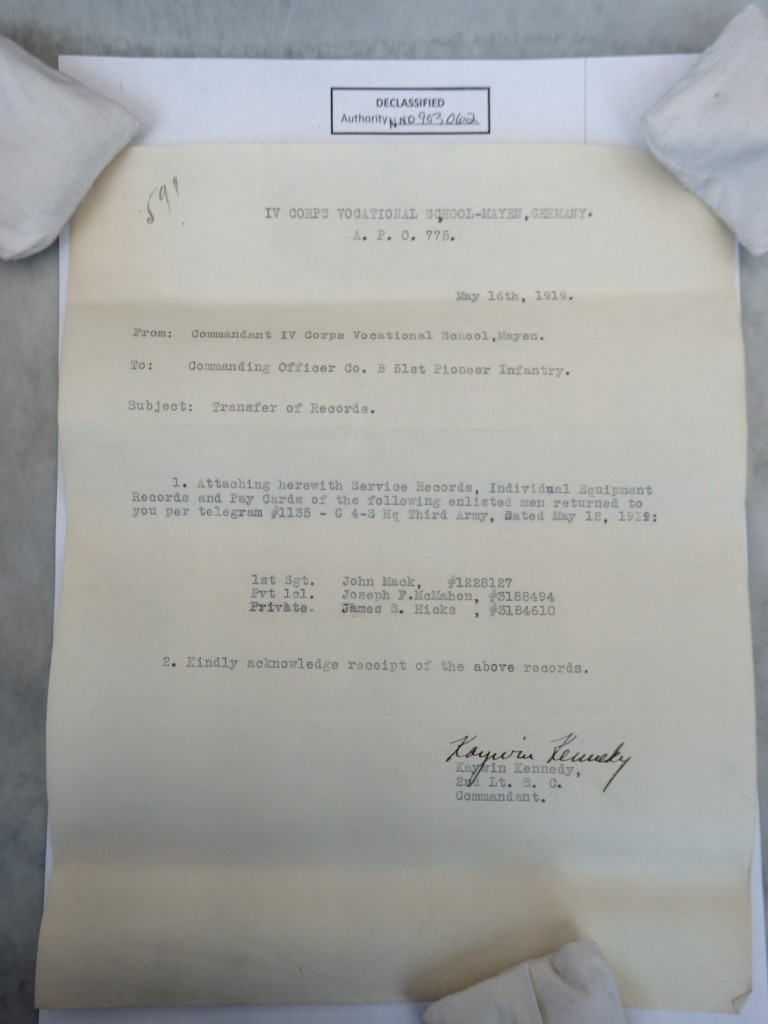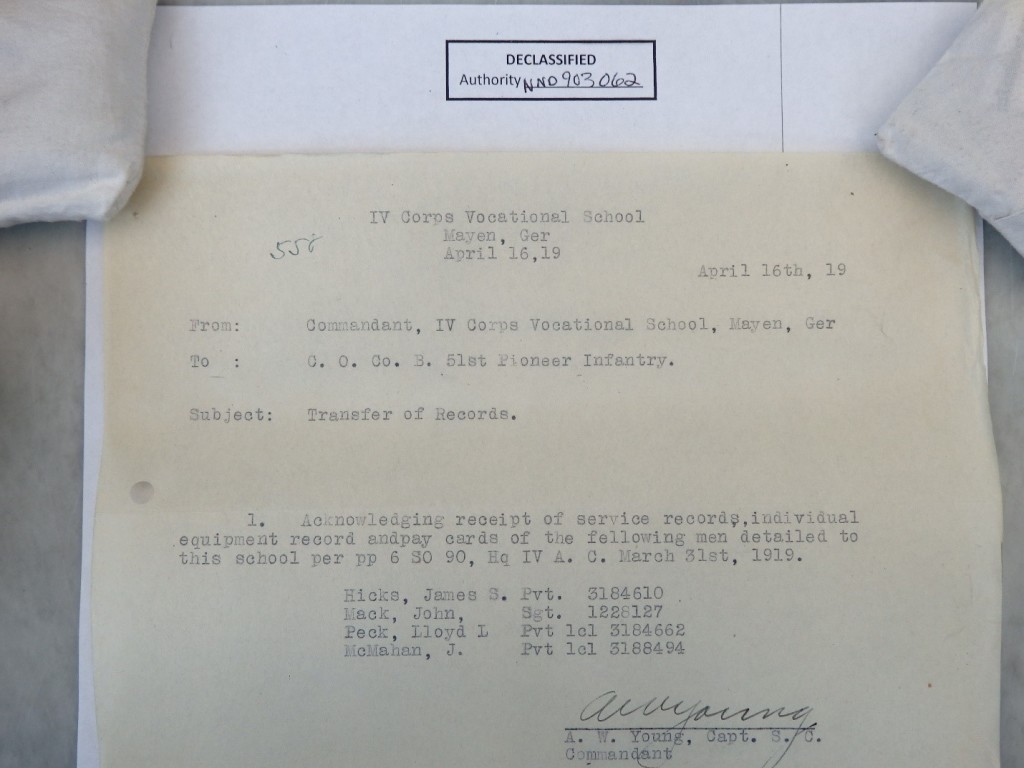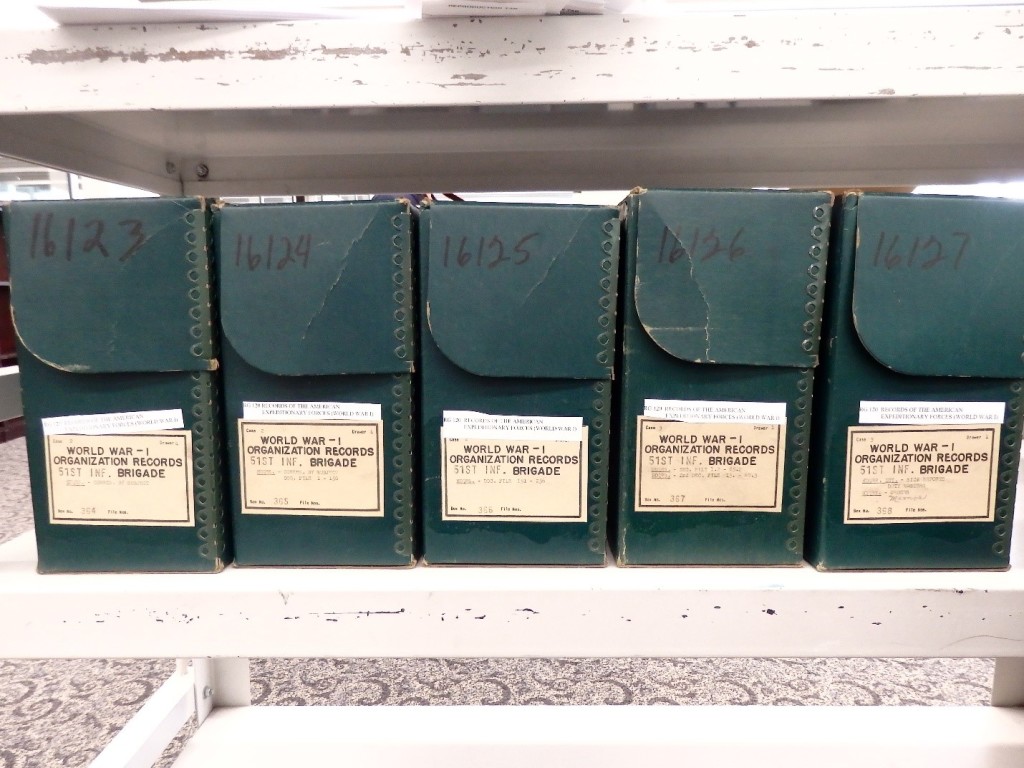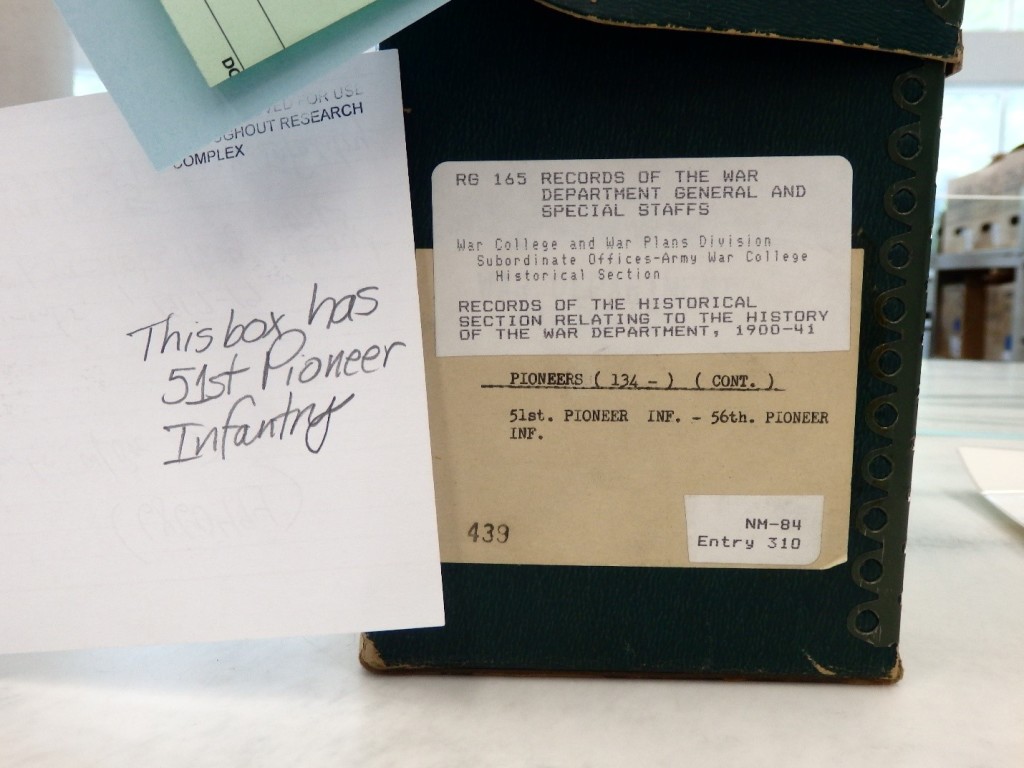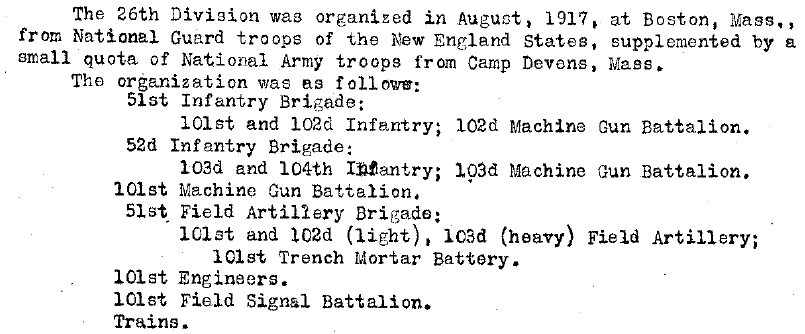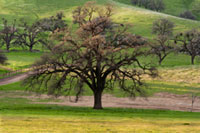USAHEC Visit – Day 1
We entered USAHEC, and asked the Information Desk to direct us to the Archives. We reported to the Reference Desk. We were issued a key for a locker, and our Research Cards were created.
The Specialist had to take my list and translate it into the locations of the material. Then we took the list to the Circulation Desk.
The materials were brought out to us after a very short wait.
This box held SGT Mansfield’s diary. I scanned it for the events and dates that were included, and to see if Joseph McMahon was mentioned by name. (He was not.) The events described in the diary had been outlined in the 51st Pioneer Infantry history that was found at NARA.
This was the folder.
The staff was incredibly helpful with helping us set up to photograph items in the folder. They have camera stands and lights available. We got to work photographing the diary for future research.
Diary in the WWI Veterans Survey Collection, Army Heritage and Education Center
Transcribing that diary will be on my to-do list.
Using the document setting on my digital camera, and hand holding the camera, I photographed the 51st Pioneer newspaper, published during the occupation of Germany, in Cochem. These newspapers will eventually be digitized.
Newspaper in the Periodical Collection, Army Heritage and Education Center
There were few columns about Company B, but none of them mentioned Joseph F. McMahon.
Newspaper in the Periodical Collection, Army Heritage and Education Center
The Moses Thisted Collection had only one folder for 51st Pioneer Infantry.
In it was only one picture.
Photo in the Moses Thisted Photograph Collection, Army Heritage and Education Center
Photo in the Moses Thisted Photograph Collection, Army Heritage and Education Center
When you are done for the day, you will clear out the locker, return the key, and sign out. If you are done with the materials, you wheel your cart back to the Circulation Desk for refiling. If you are coming back, the Specialists will ask you to fill in a hold slip that includes the date that you are returning. Your materials can be kept for you for a maximum of ten calendar days.


